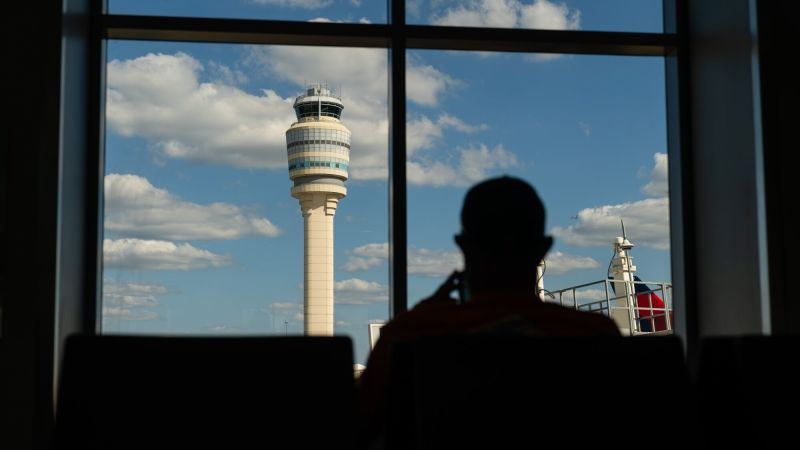CNN
—
The Federal Aviation Administration announced the schedule changes in response to an expert panel that recommended air traffic controllers have more stable work schedules and consistent time off to reduce fatigue.
The commission was established following a series of near-miss crashes on US runways.
FAA Administrator Mike Whitaker announced Friday that air traffic controllers will be required to have a minimum of 10 hours of vacation between shifts and 12 hours of vacation before controllers begin their overnight shift.
Under current work regulations, air traffic controllers can be scheduled to work a minimum of eight hours after the end of their previous shift.
The move comes as the agency seeks to add to its severely understaffed workforce, which is working long overtime hours, including six days a week, to fill shift gaps in towers and centers across the country. Ta.
The schedule change came after two passenger planes came within about 400 feet of the crash on Thursday, prompting air traffic controllers to direct them to the same runway at Reagan National Airport. It was one of many near misses over the past year.
During Friday’s briefing with Whitaker, the FAA did not take questions from reporters about the cause of the Reagan incident or whether controller fatigue played a role.
The National Air Traffic Controllers Association said fatigue is a “serious problem” but said the FAA’s proposed changes could actually cause controllers to absorb more on-the-job fatigue.
“NATCA is concerned that immediate implementation of the new controller rules could create compensation holes in air traffic facility schedules, given the already short-staffed controllers.” the union said in a statement. “Requiring air traffic controllers to work mandatory overtime to fill those holes will increase fatigue and make the new policy little more than a window-dressing bill.”
The union said this year’s schedule agreement was negotiated late last year and any sudden changes could “disrupt the lives of air traffic controllers.”
The committee called for the classic air traffic controller schedule, known as the “rattle,” to be abolished. This requires the air traffic controller to work five shifts in four days (two afternoon to evening shifts, two morning shifts, and one night shift). In this model, the controller will turn off for his 80 hours and then turn on again.
Panel chairman Mark Rosekind told reporters it could be a hectic schedule for seven of the current 10 air traffic controllers. Researchers have been studying the effects of this scheduling pattern for 20 to 30 years, he said.
Although the commission did not propose an alternative scheduling model, it identified nearly 60 items to address, including establishing minimum rest periods between shifts, surveying employees about their preferred schedule patterns, and increasing the number of air traffic controllers. given to the FAA.
Rosekind encouraged the FAA to look at both the schedule and the hours controllers actually work. “There are so many possibilities for discrepancies between the planned hours and the hours actually worked.”
The report states that “mechanisms to address overtime, fatigue risk factors associated with working consecutive days or weeks, and fluctuating traffic and workload scenarios should ensure appropriate increases in staffing levels. “This could be improved or eliminated.”
The FAA’s latest numbers, released last May, showed it was 3,600 air traffic controllers short of the agency’s staffing goals. In November, the president of the air traffic controllers union told Congress that even after accounting for employee losses, including retirements, the air traffic control agency added only six controllers over the past year. The agency’s latest budget proposal calls for increasing its annual hiring cap from 1,800 to 2,000.
Sleep records kept by some managers show that some workers slept less than 2.5 hours between the end of the day shift and the start of the night shift on the same calendar day, according to a new report.
Whittaker said 10- or 12-hour windows between shifts would be introduced within 90 days. He also said overtime will continue to be part of controllers’ schedules while the agency works to increase the number of controllers on its payroll.
A 2001 study of air traffic controllers cited in this report reveals some startling statistics. Air traffic controllers link half of their on-the-job errors to fatigue, with work schedules being the main culprit. More than three-quarters of the managers surveyed said they had almost fallen asleep at work.
Additionally, one-third of air traffic controllers said they had fallen asleep at the wheel, most often after a late-night shift at the end of a long shift.
The Scientific Expert Panel on Air Traffic Controller Safety, Work Hours, and Health included three experts and was led by a former member of the National Transportation Safety Board.







